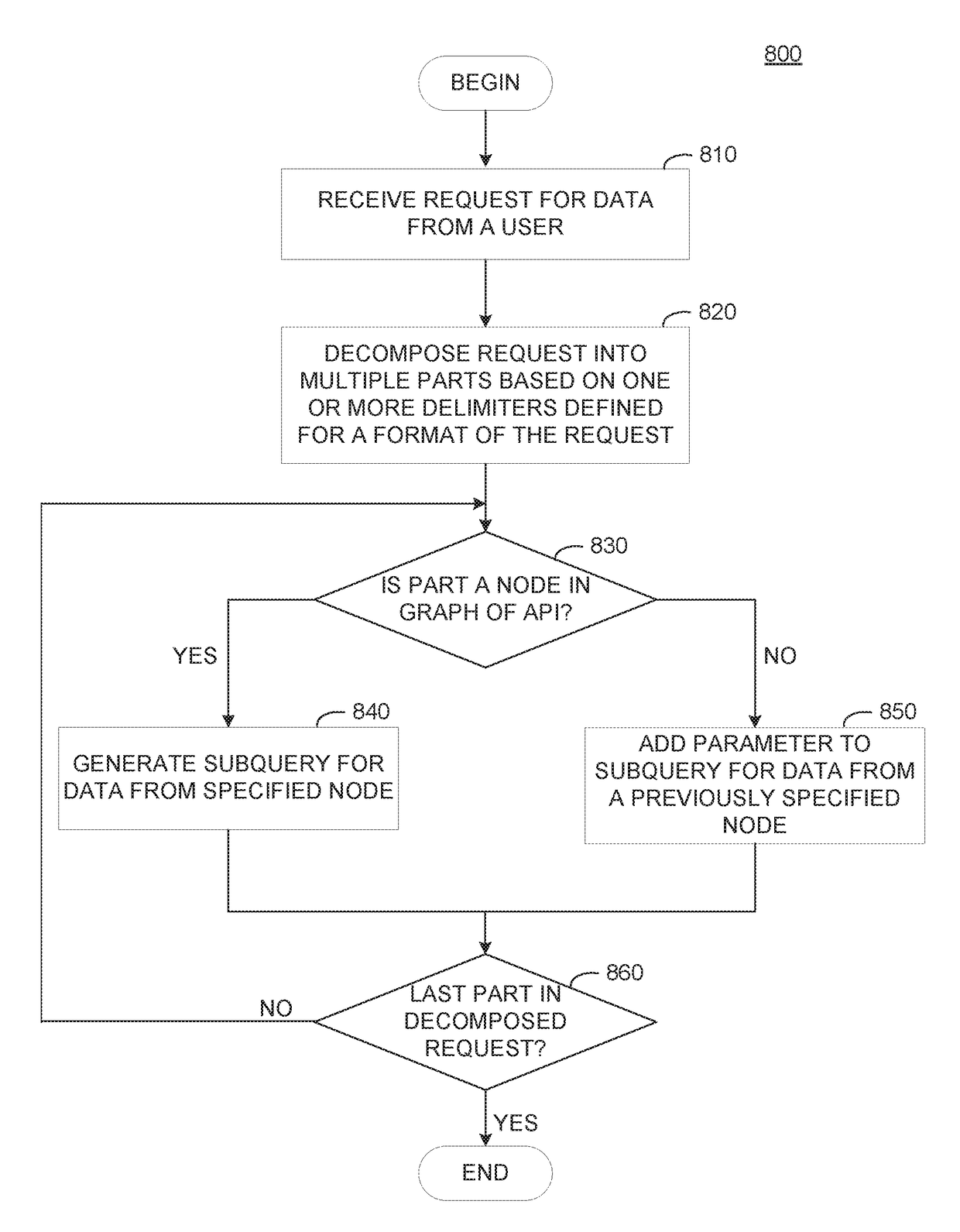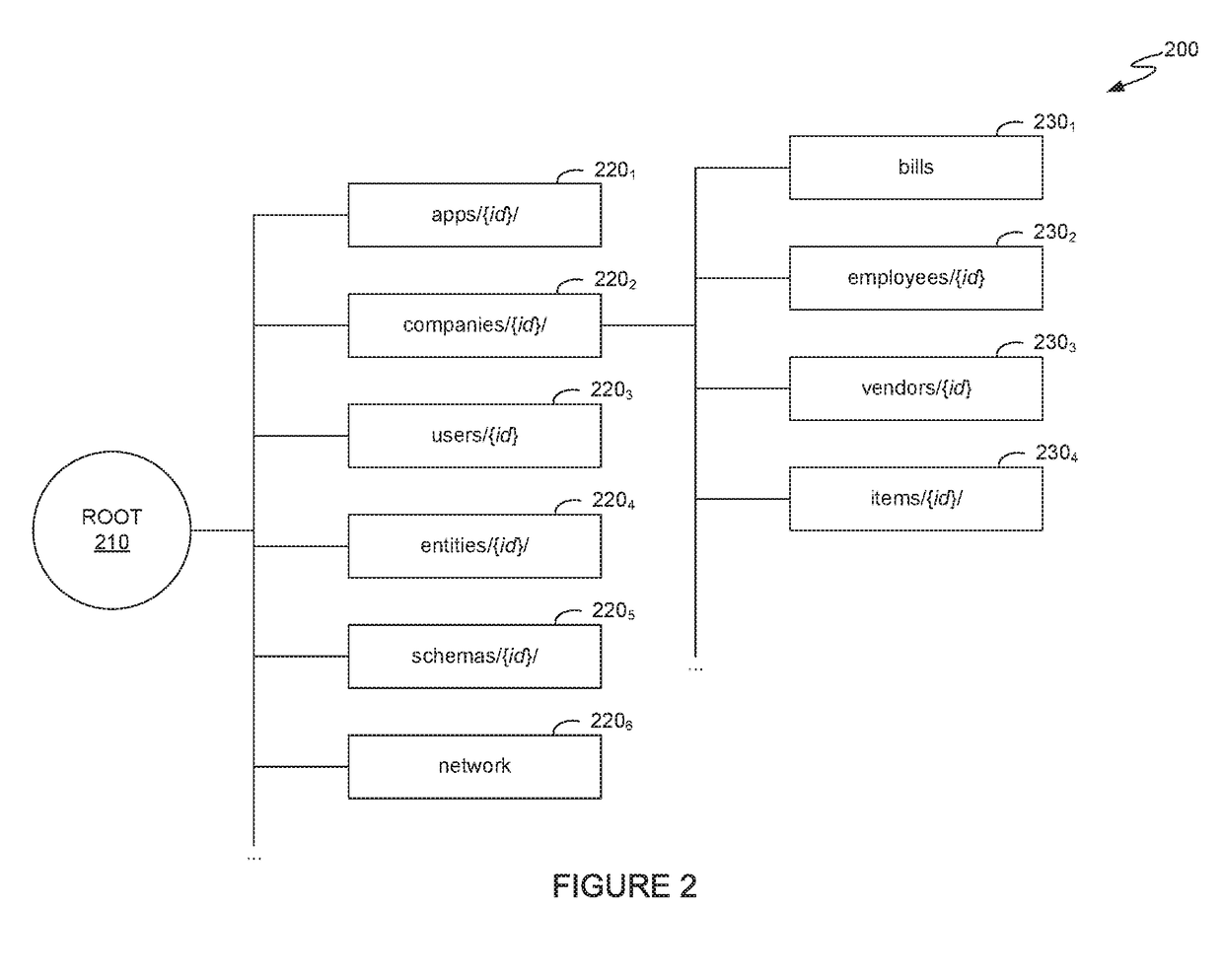Defining application programming interfaces (APIS) using object schemas
a technology of object schema and application programming interface, applied in the execution of user interfaces, multi-programming arrangements, instruments, etc., can solve the problems of increasing the amount of work required to maintain and update the api, and duplicated large amounts of cod
- Summary
- Abstract
- Description
- Claims
- Application Information
AI Technical Summary
Benefits of technology
Problems solved by technology
Method used
Image
Examples
Embodiment Construction
[0022]Application programming interfaces (APIs) generally expose methods and procedures that software developers can use to build software applications using features provided by a software system. These features may include, for example, database interaction, data processing, and so on. Over time, additional features may be introduced into the API to address data and processing requirements for various use cases. To introduce new features into the API, a developer can, for example, add additional functions which may have a distinct name or overload an existing function (i.e., have the same name as an existing function but use different input parameters).
[0023]Embodiments presented herein provide techniques for generating API function calls by traversing a graph representation of an API. Generally, a graph representation of an API includes a root node and a plurality of child nodes, with each child node representing a function exposed by the API (e.g., to request or write data to a ...
PUM
 Login to View More
Login to View More Abstract
Description
Claims
Application Information
 Login to View More
Login to View More - R&D
- Intellectual Property
- Life Sciences
- Materials
- Tech Scout
- Unparalleled Data Quality
- Higher Quality Content
- 60% Fewer Hallucinations
Browse by: Latest US Patents, China's latest patents, Technical Efficacy Thesaurus, Application Domain, Technology Topic, Popular Technical Reports.
© 2025 PatSnap. All rights reserved.Legal|Privacy policy|Modern Slavery Act Transparency Statement|Sitemap|About US| Contact US: help@patsnap.com



